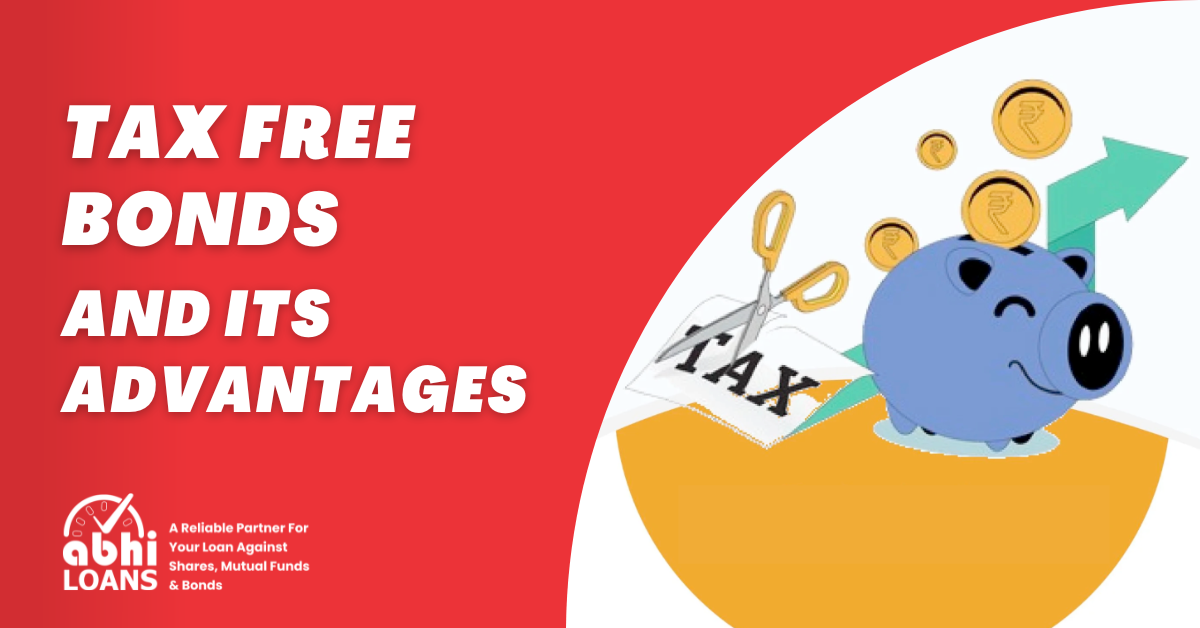Tax Free Bonds and its Advantages
Amidst the ever-changing terrain of investment opportunities, tax free bonds have surfaced as an enticing option for investors in pursuit of consistent returns coupled with advantageous tax incentives. These bonds, issued by government entities, provide a unique avenue for individuals to grow their wealth while enjoying certain tax advantages.
In this blog post, we will delve into the world of tax free bonds, understanding what they are, the benefits they offer, and why investing in tax free bonds can be a strategic move for investors.
Understanding Tax Free Bonds
Tax-free bonds are debt instruments issued by government entities, such as municipal corporations or government-backed institutions, to raise capital for various projects. What sets these bonds apart is their unique tax treatment, as the interest earned by investors is exempt from income tax. This distinguishes them from taxable bonds, where interest income is subject to taxation.
Investing in Tax Free Bonds
Tax-Free Government Bonds
Tax-free bonds are often issued by government-backed entities, providing investors with a high level of safety and assurance. The government’s involvement ensures a lower risk of default, making these bonds a relatively secure investment option.
Tax Benefits
The primary allure of tax-free bonds lies in the exemption of interest income from taxation. This feature makes them particularly attractive to investors in higher tax brackets, as it allows them to retain a larger portion of their earnings. The tax-free nature of these bonds enhances their post-tax returns, providing a more favorable outcome compared to taxable alternatives.
Stable Returns
Tax-free bonds typically offer fixed interest rates, providing investors with a predictable income stream. This stability can be appealing to conservative investors or those seeking a reliable source of income during retirement.
Long-Term Investment
While tax-free bonds may have lock-in periods, they are often considered as long-term investments. Investors with a patient approach can benefit from the compounding effect of reinvested tax-free interest over time, leading to potentially higher returns.
Benefits of Tax-Free Bonds
Income Tax Exemption
The standout advantage of tax free bonds is the complete exemption of interest income from income tax. This can significantly enhance the after-tax returns for investors, making them an attractive option, especially for those in higher tax brackets.
Steady Cash Flow
With fixed interest rates, tax free bonds offer a steady and predictable cash flow. This characteristic makes them suitable for income-focused investors who prioritize a reliable source of earnings.
Government Backing
As these bonds are typically issued by government entities or government-backed institutions, investors benefit from a higher level of safety and security. The lower risk of default adds to the appeal, particularly for risk-averse investors.
Portfolio Diversification
Including tax free bonds in a diversified investment portfolio can be a prudent strategy. These bonds provide a counterbalance to riskier assets and can contribute to overall portfolio stability.
Potential Capital Appreciation
Beyond the tax benefits, tax free bonds may also experience capital appreciation over time, especially if interest rates decline. This potential for capital gains adds another dimension to the overall returns on investment.
Considerations for Investors
Interest Rate Risk
Investors should be aware of interest rate risk, as bond prices can be inversely affected by changes in interest rates. While tax free bonds provide a fixed interest rate, the market value of the bonds may fluctuate if interest rates in the broader economy change.
Lock-In Periods
Some tax-free bonds come with lock-in periods during which premature withdrawals may be subject to penalties. Investors should carefully consider their liquidity needs and investment horizon before committing to tax-free bonds with lock-in provisions.
Taxable Bonds Comparison
It’s essential for investors to compare the potential returns of tax-free bonds with taxable bond options. Depending on an individual’s tax bracket, taxable bonds with higher interest rates may offer competitive after-tax returns.
Credit Ratings
While tax-free bonds are generally considered low-risk due to government backing, investors should still pay attention to credit ratings. Bonds issued by municipal corporations may carry slightly higher risk, and evaluating credit ratings can provide insights into the issuer’s financial health.
Investment Goals Alignment
Investors should align their decision to invest in tax-free bonds with their overall financial goals. Whether seeking steady income, tax efficiency, or portfolio diversification, understanding personal financial objectives is crucial.
Conclusion
Tax-free bonds represent a compelling investment option, offering a unique combination of tax benefits, stability, and potential for long-term growth. Investors looking to optimize their after-tax returns and enjoy the security of government-backed investments may find tax-free bonds to be a valuable addition to their portfolios. As with any investment decision, careful consideration of individual financial goals, risk tolerance, and market conditions is paramount.
Frequently Asked Questions (FAQs)
Q: How are tax-free bonds different from taxable bonds?
Tax-free bonds are distinct from taxable bonds because the interest income from tax-free bonds is not taxed, giving investors a higher after-tax return. On the other hand, interest income from taxable bonds is subject to taxation.
Q: Are tax-free bonds suitable for all investors?
Tax-free bonds can be suitable for investors, especially those in higher tax brackets seeking tax efficiency. However, individuals should assess their financial goals, risk tolerance, and investment horizon before investing in these bonds.
Q: What is the typical lock-in period for tax-free bonds?
The lock-in period for tax-free bonds can vary. Some bonds may have no lock-in period, while others may impose restrictions on premature withdrawals for a specific duration. Investors should review the terms and conditions before investing.
Q: Can tax-free bonds provide capital appreciation in addition to interest income?
Yes, tax-free bonds may experience capital appreciation over time, particularly if interest rates decline. While the primary focus is on tax-free interest income, potential capital gains can contribute to overall returns.
Q: How can investors evaluate the credit risk of tax-free bonds?
Investors can evaluate the credit risk of tax-free bonds by examining credit ratings assigned by credit rating agencies. Government-backed bonds generally have higher credit ratings, while bonds issued by municipal corporations may carry slightly higher risk.

